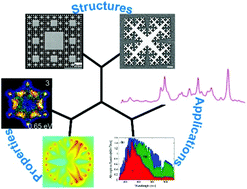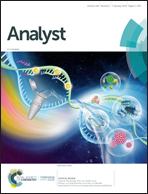Advancements in fractal plasmonics: structures, optical properties, and applications
Abstract
The structural characteristics of plasmonic nanostructures directly influence their plasmonic properties, and therefore, their potential role in applications ranging from sensing and catalysis to light- and energy-harvesting. For a structure to be compatible with a selected application, it is critical to accurately tune the plasmonic properties over a specific spectral range. Fabricating structures that meet these stringent requirements remains a significant challenge as plasmon resonances are generally narrow with respect to the considered selected spectral range. Adapted from their well-established role in GHz applications, plasmonic fractal structures have emerged as architectures of interest due to their ability to support multiple tunable resonances over broad spectral domains. Here, we review the advancements that have been made in the growing field of fractal plasmonics. Iterative and space-filling geometries that can be prepared by advanced nanofabrication techniques, notably electron-beam lithography, are presented along with the optical properties of such structures and metasurfaces. The distributions of electromagnetic enhancement for some of these fractals is shown, along with how the resonances can be mapped experimentally. This review also explores how fractal structures can be used for applications in solar cell and plasmon-based sensing applications. Finally, the future areas of physical and analytical science that could benefit from fractal plasmonics are discussed.

- This article is part of the themed collections: Analytical Nanoscience and Recent Review Articles


 Please wait while we load your content...
Please wait while we load your content...